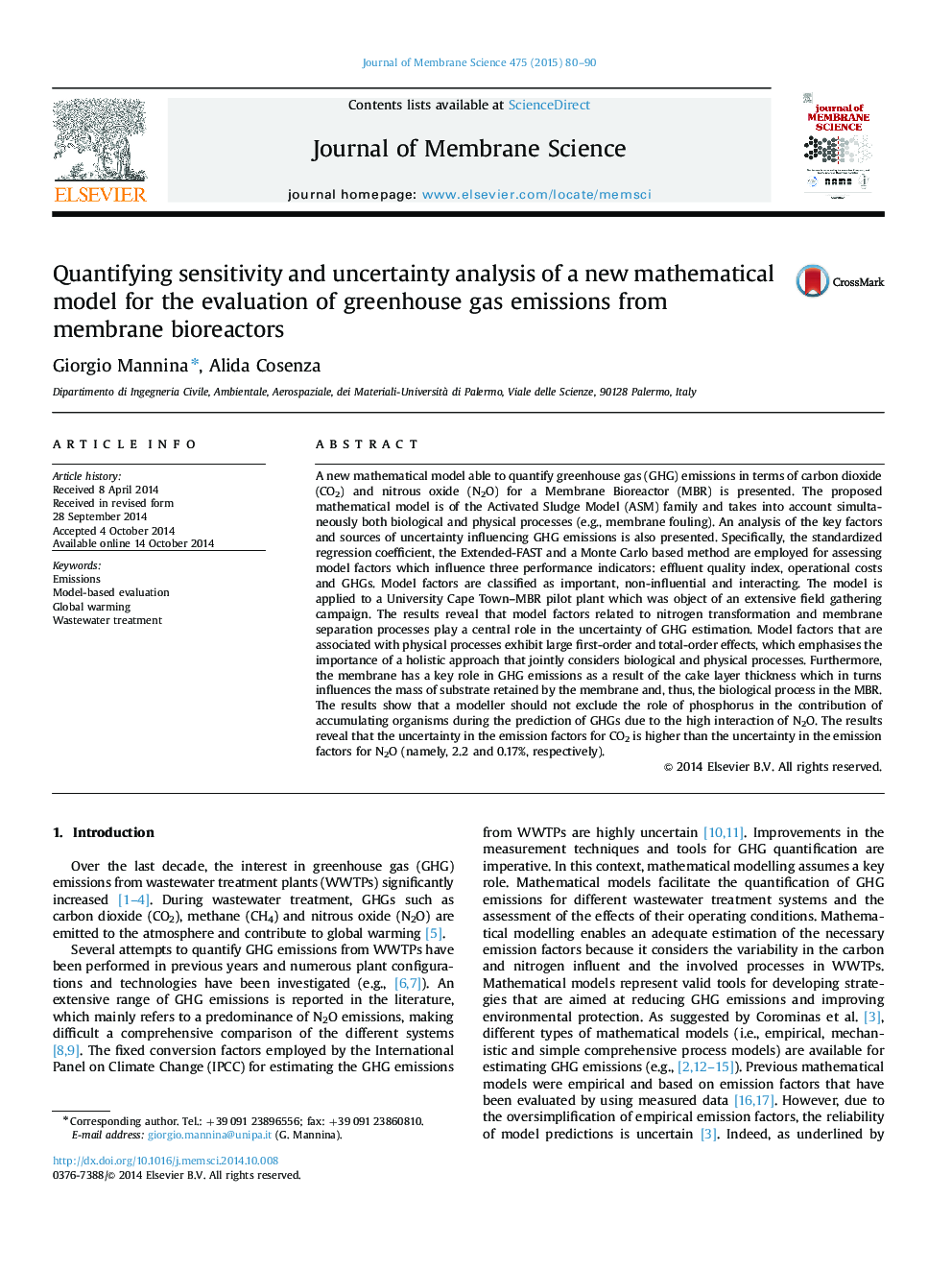| کد مقاله | کد نشریه | سال انتشار | مقاله انگلیسی | نسخه تمام متن |
|---|---|---|---|---|
| 633144 | 1456024 | 2015 | 11 صفحه PDF | دانلود رایگان |

• A new mathematical model for greenhouse gas emission from MBR is presented.
• Sensitivity and uncertainty analysis is carried out for identifying key model factors.
• High interaction of nitrogen conversion and phosphorus accumulating organisms parameters is derived.
• The uncertainty for CO2 is higher compared to N2O for the pilot plant analysed.
A new mathematical model able to quantify greenhouse gas (GHG) emissions in terms of carbon dioxide (CO2) and nitrous oxide (N2O) for a Membrane Bioreactor (MBR) is presented. The proposed mathematical model is of the Activated Sludge Model (ASM) family and takes into account simultaneously both biological and physical processes (e.g., membrane fouling). An analysis of the key factors and sources of uncertainty influencing GHG emissions is also presented. Specifically, the standardized regression coefficient, the Extended-FAST and a Monte Carlo based method are employed for assessing model factors which influence three performance indicators: effluent quality index, operational costs and GHGs. Model factors are classified as important, non-influential and interacting. The model is applied to a University Cape Town–MBR pilot plant which was object of an extensive field gathering campaign. The results reveal that model factors related to nitrogen transformation and membrane separation processes play a central role in the uncertainty of GHG estimation. Model factors that are associated with physical processes exhibit large first-order and total-order effects, which emphasises the importance of a holistic approach that jointly considers biological and physical processes. Furthermore, the membrane has a key role in GHG emissions as a result of the cake layer thickness which in turns influences the mass of substrate retained by the membrane and, thus, the biological process in the MBR. The results show that a modeller should not exclude the role of phosphorus in the contribution of accumulating organisms during the prediction of GHGs due to the high interaction of N2O. The results reveal that the uncertainty in the emission factors for CO2 is higher than the uncertainty in the emission factors for N2O (namely, 2.2 and 0.17%, respectively).
Figure optionsDownload high-quality image (321 K)Download as PowerPoint slide
Journal: Journal of Membrane Science - Volume 475, 1 February 2015, Pages 80–90